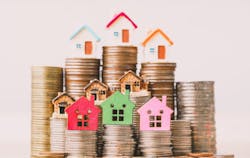What Buyers and Sellers Can Expect From Rising Inflation
In October 2021, the annual inflation rate hit its highest record in over 30 years, impacting everything from gas prices to housing affordability, Realtor.com reports. Higher inflation is likely a result of government aid and remote work, especially as thousands of businesses nationwide struggled to keep their doors open during the pandemic. With less demand, companies began charging more for goods and services in order to stay afloat, and prices have yet to come down.
Supply chain issues also boosted national inflation throughout the pandemic with delayed manufacturing and trading amid various lockdowns and quarantine ordinances. A similar demand-supply imbalance in the housing market is also leaving behind record high prices and creating a competitive environment for buyers.
Not surprisingly, inflation is influencing the real estate market in a big way, too. According to a Stanford University study, residential real estate has historically been an “investment safe-haven” during inflationary periods. Researchers found that during the 1970s (another moment of surging inflation), home prices rose relative to the size of the economy. This was good news for homeowners and real estate investors, since it meant that their home’s rising value helped offset rising prices elsewhere.
If you were shopping for a new home, though, this was a major challenge—and the same may hold true today.
“Inflation exacerbates the housing demand-supply imbalance, which means even higher prices for housing,” explains Lawrence J. White, the Robert Kavesh Professor of Economics at New York University’s Leonard N. Stern School of Business. “People think, ‘I need a hedge against inflation, housing has traditionally been a long-lived, durable asset.’”
